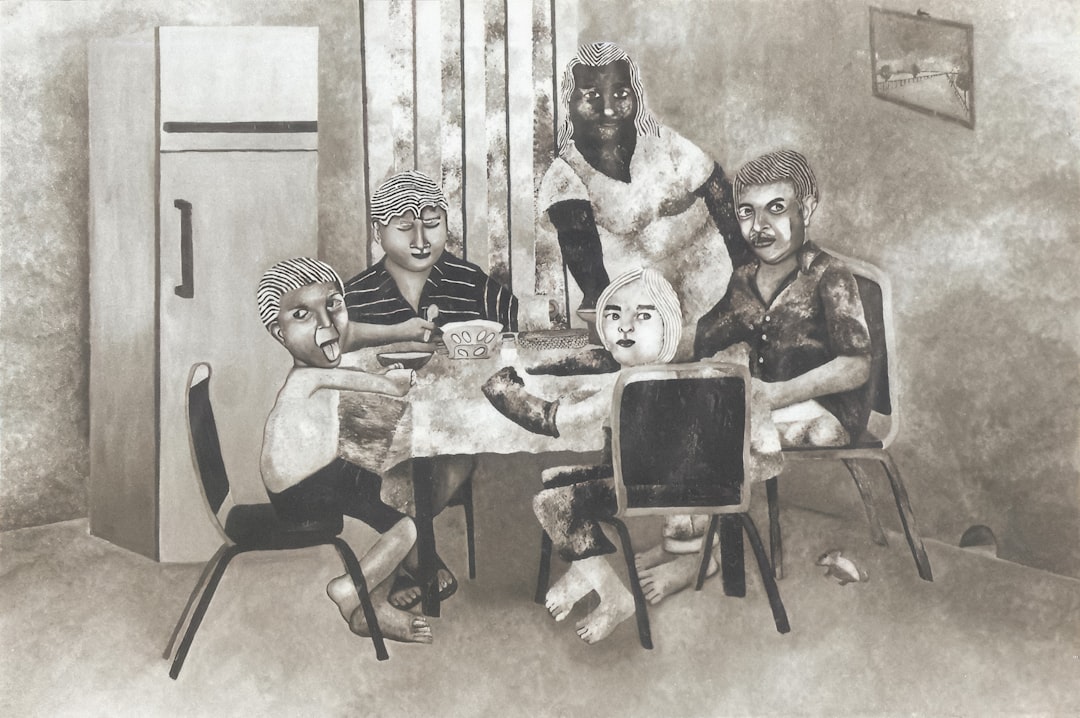Saddam Hussein, born on April 28, 1937, in Al-Awja, Iraq, rose to prominence as a key figure in the Ba’ath Party, which espoused Arab nationalism and socialism. His early life was marked by poverty and hardship, which shaped his political ambitions and ruthless demeanor. After a failed assassination attempt on then-Prime Minister Abd al-Karim Qasim in 1959, Saddam fled to Syria and Egypt, where he honed his political skills.
By 1968, he had orchestrated a coup that brought the Ba’ath Party to power, ultimately leading to his ascension as President of Iraq in 1979. Under his rule, Iraq experienced significant modernization and economic growth, but this was overshadowed by widespread human rights abuses and brutal repression of dissent. Saddam’s regime was characterized by a cult of personality, where he was portrayed as the savior of the Iraqi people.
His government engaged in aggressive military campaigns, most notably the Iran-Iraq War from 1980 to 1988, which resulted in immense loss of life and economic devastation. Following this conflict, Saddam invaded Kuwait in 1990, prompting international condemnation and the Gulf War led by a U.S.-led coalition in 1991. The aftermath of the war left Iraq under severe sanctions and a no-fly zone imposed by Western powers.
Despite these challenges, Saddam maintained a tight grip on power through fear and violence, employing tactics such as torture and execution against perceived enemies.
Key Takeaways
- Saddam Hussein was the President of Iraq from 1979 to 2003, known for his brutal dictatorship and human rights abuses.
- The hunt for Saddam Hussein involved a massive manhunt by the US military and intelligence agencies, leading to his eventual capture in December 2003.
- Saddam Hussein’s capture was a major victory for the US-led coalition in Iraq, leading to widespread celebrations and relief among the Iraqi people.
- The capture of Saddam Hussein had a significant impact on the Iraq War, leading to a temporary decrease in violence and a boost in morale for the coalition forces.
- Saddam Hussein was tried by an Iraqi Special Tribunal and sentenced to death by hanging in 2006, sparking mixed reactions both domestically and internationally.
The hunt for Saddam Hussein
The hunt for Saddam Hussein began in earnest after the U.S.-led invasion of Iraq in March 2003. As coalition forces rapidly advanced toward Baghdad, Saddam’s regime crumbled, and he became a fugitive. The U.S. military launched an extensive search operation to locate him, employing intelligence resources, satellite imagery, and ground troops. The hunt was complicated by the chaotic environment in Iraq, where insurgency and sectarian violence were on the rise. Many believed that Saddam had fled to neighboring countries or was hiding among loyalists who remained committed to his cause. As the search continued, various reports emerged about Saddam’s whereabouts. Some claimed he was hiding in remote areas of Iraq, while others suggested he had escaped to Syria or Iran. The U.S.
Despite numerous leads and sightings reported by locals, the elusive former dictator remained at large for several months. The hunt for Saddam became emblematic of the broader challenges faced by coalition forces in stabilizing Iraq and establishing a new government.
The capture of Saddam Hussein

On December 13, 2003, after nearly nine months of evasion, Saddam Hussein was captured by U.S. forces near Tikrit, his hometown.
” Intelligence gathered from various sources indicated that Saddam was hiding in a small underground hideout on a farm owned by a loyalist.
When U.S. troops stormed the location, they found him disheveled and unarmed, hiding in a spider hole—a makeshift bunker dug into the ground. The capture of Saddam was a significant turning point in the Iraq War and was celebrated by many as a victory for coalition forces.
It marked the end of an era of fear and oppression that had characterized his rule. Following his capture, Saddam was taken into custody and subjected to interrogation by U.S. military personnel.
His capture not only provided a sense of closure for many Iraqis who had suffered under his regime but also served as a symbolic blow to the remnants of his loyalist supporters.
Reactions to Saddam Hussein’s capture
| Metrics | Data |
|---|---|
| Global Media Coverage | Extensive coverage by major news outlets worldwide |
| Public Reactions | Celebrations in Iraq and some parts of the world, relief for many, and some concerns about potential backlash |
| Political Responses | Statements of support from many world leaders, calls for justice and stability in Iraq |
| Impact on Insurgency | Expectations of a potential decrease in insurgent activities in Iraq |
The reactions to Saddam Hussein’s capture were mixed and varied widely across different segments of society. In Iraq, many citizens expressed relief and joy at the news of his arrest. For those who had endured years of tyranny and brutality under his rule, the capture represented hope for a new beginning and the possibility of justice for the atrocities committed during his regime.
Celebrations erupted in various cities as people took to the streets to express their newfound freedom from fear. Conversely, there were also segments of the population that viewed Saddam as a symbol of resistance against foreign intervention. Some loyalists and members of his former regime expressed outrage at his capture, framing it as an affront to Iraqi sovereignty.
This division highlighted the complexities of Iraqi society at the time, where opinions about Saddam were deeply polarized. The reactions underscored the challenges facing coalition forces as they sought to establish stability and rebuild a nation torn apart by years of conflict.
Impact of Saddam Hussein’s capture on the Iraq War
Saddam Hussein’s capture had profound implications for the ongoing Iraq War. Initially, it was seen as a significant victory for U.S. forces and a potential turning point in their efforts to stabilize the country.
Many believed that capturing Saddam would lead to a decrease in violence and insurgency as his loyalists would lose their leader and motivation to fight back against coalition forces. However, this expectation proved overly optimistic. In reality, the insurgency intensified following Saddam’s capture.
Many former Ba’athists and disillusioned Iraqis rallied against what they perceived as an occupation rather than liberation. The power vacuum left by Saddam’s removal created fertile ground for extremist groups to flourish, leading to increased sectarian violence and chaos throughout Iraq. The initial euphoria surrounding his capture quickly gave way to a grim reality as coalition forces faced mounting challenges in quelling the insurgency and restoring order.
Legal proceedings against Saddam Hussein

Following his capture, Saddam Hussein was transferred to U.S. custody and later handed over to an Iraqi court established specifically to try him for crimes against humanity. The legal proceedings against him were fraught with controversy from the outset.
Many questioned the legitimacy of the court and whether it could provide a fair trial given the political climate in Iraq at the time. Critics argued that the trial was more about retribution than justice, while supporters believed it was essential for accountability. The Iraqi Special Tribunal was tasked with prosecuting Saddam for various charges, including genocide against the Kurdish population during the Anfal campaign in the late 1980s and crimes against humanity related to his brutal repression of dissenters.
The trial began on October 19, 2005, amid significant media attention both domestically and internationally. As proceedings unfolded, they were marked by dramatic moments, including outbursts from Saddam himself, who often dismissed the court’s authority and maintained that he was still the legitimate leader of Iraq.
Saddam Hussein’s trial and sentencing
Saddam Hussein’s trial became a focal point for discussions about justice in post-Saddam Iraq. Over the course of several months, witnesses testified about the atrocities committed under his regime, painting a harrowing picture of life during his rule. The prosecution presented evidence of mass graves and testimonies from survivors who recounted their experiences of torture and oppression at the hands of Saddam’s security forces.
On November 5, 2006, after months of proceedings, Saddam was found guilty of crimes against humanity for his role in the 1982 massacre of Shiite villagers in Dujail. He was sentenced to death by hanging—a verdict that sparked mixed reactions both within Iraq and around the world. While many celebrated the sentence as a long-overdue measure of justice for victims of his regime, others criticized it as politically motivated and indicative of ongoing sectarian tensions within Iraq.
International response to Saddam Hussein’s capture
The international response to Saddam Hussein’s capture was varied and complex. Many world leaders welcomed his arrest as a necessary step toward accountability for human rights abuses committed during his rule. The United Nations expressed support for efforts to bring him to justice while emphasizing the importance of ensuring a fair trial that adhered to international legal standards.
However, there were also significant criticisms regarding how the U.S.-led coalition handled Saddam’s capture and subsequent trial. Some argued that the process lacked transparency and fairness due to its political context within Iraq’s tumultuous landscape post-invasion. Human rights organizations raised concerns about potential violations during his detention and trial proceedings, calling for adherence to due process rights even for individuals accused of heinous crimes.
Legacy of Saddam Hussein’s regime
Saddam Hussein’s legacy is one marked by contradictions—while he is remembered as a tyrant responsible for widespread suffering and oppression, he also left behind a complex political landscape that continues to shape Iraq today. His regime’s brutal tactics instilled fear among citizens but also fostered a sense of national identity among some segments of society who viewed him as a defender against foreign intervention. The consequences of his rule are still felt in contemporary Iraq, where sectarian divisions have deepened since his ousting.
The power dynamics established during his time have contributed to ongoing instability and violence within the country. Additionally, debates surrounding accountability for past atrocities remain contentious as Iraq grapples with its history while striving for reconciliation among its diverse communities.
Aftermath of Saddam Hussein’s capture
The aftermath of Saddam Hussein’s capture saw Iraq plunged into further chaos as sectarian violence escalated dramatically following his trial and execution. The power vacuum left by his removal allowed extremist groups like al-Qaeda in Iraq to gain traction, leading to widespread insurgency that plagued both Iraqi civilians and coalition forces alike. The initial hopes for stability following his arrest quickly dissipated as violence surged across the nation.
Moreover, Saddam’s execution on December 30, 2006, did not bring about closure or peace; instead, it intensified divisions within Iraqi society along sectarian lines. His death became a rallying point for those who viewed him as a martyr rather than a tyrant—complicating efforts toward national reconciliation amidst ongoing strife.
Lessons learned from the capture of Saddam Hussein
The capture of Saddam Hussein offers several critical lessons regarding military intervention and post-conflict reconstruction efforts. Firstly, it underscores the importance of understanding local dynamics before engaging in regime change; failing to do so can lead to unintended consequences that exacerbate existing tensions rather than resolve them. Additionally, it highlights how accountability mechanisms must be carefully designed within post-conflict societies—ensuring fairness while addressing historical grievances is essential for fostering trust among communities moving forward.
Ultimately, while capturing leaders like Saddam may seem like victories on paper, achieving lasting peace requires comprehensive strategies that prioritize reconciliation over retribution in order to build sustainable futures for war-torn nations.
Saddam Hussein, the former President of Iraq, was captured during the Iraq War, a conflict that began in 2003 when a coalition led by the United States invaded Iraq. This war aimed to dismantle Hussein’s regime, which was accused of possessing weapons of mass destruction and having ties to terrorism. For more detailed insights into the events surrounding his capture and the broader implications of the Iraq War, you can explore a related article on this topic by visiting this page.
WATCH NOW! How the US Hunted and Captured Saddam Hussein: The Untold Story of Operation Red Dawn
FAQs
What war was Saddam Hussein captured in?
Saddam Hussein was captured during the Iraq War, also known as the Second Gulf War, which began in 2003 and lasted until 2011.
When was Saddam Hussein captured?
Saddam Hussein was captured on December 13, 2003, by U.S. forces near his hometown of Tikrit, Iraq.
Why was Saddam Hussein captured?
Saddam Hussein was captured by U.S. forces as part of their efforts to remove him from power and hold him accountable for his regime’s actions, including human rights abuses and violations of international law.
What happened to Saddam Hussein after his capture?
Saddam Hussein was eventually tried by an Iraqi special tribunal for crimes against humanity, and he was found guilty and sentenced to death by hanging. He was executed on December 30, 2006.
